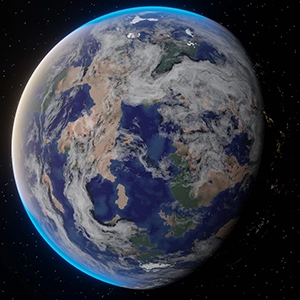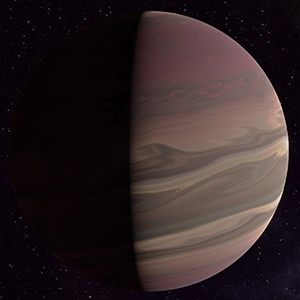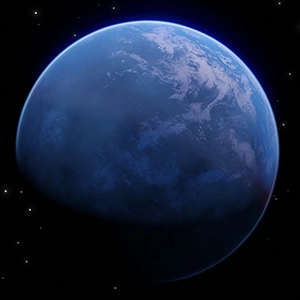Hövnísan Planeto-Taxonomy Standards
Public planetology taximetrics record
Property of the Royal Atheneum of Hövnís, Eörpe
Here at the Royal Atheneum of Hövnís, Eörpe, planets and other stellar objects are categorized primarily through phenetic taxonomy, meaning that they are grouped by overall similarity – usually in morphology and other observable traits. The most common differentiations made are base composition, size and mass, median temperature, baryonic pressure, gravitational force, and atmosphere contents.
The term world is in all contexts considered synonymous to habitable planet, with the definition 'a planet with a biosphere capable of sustaining complex lifeforms'.
Definition of Planet & World
Within the context of this documentation, a planet is defined as 'an object in space that enough mass and gravitation to be near-spheroid due to hydrostatic equilibrium but has never undergone nuclear fusion'.
Most planetary bodies are described to have between two and four layers: atmosphere, crust, mantle and core.
The Taxonomic Hierarchy
The taxonomic hierarchy originally featured four base levels, with up to two sublevels each (prefixed Sub- and Infra-). Recently however, it was decided to include an additional fifth level to aid in grouping planets based on their atmospheres and habitability.All levels feature a limited set of categories with fixed names for classifying planetary bodies. Any additions to these need to have substantial scientific basis, and the process to have them formally accepted for use is usually long and thorough.
The planeto-taxonomic hierarchy still lacks Latirönen naming. Planetologists are clearly not quite as enthusiastic for fancy terminology as zoologists are.
Domain
The first level, the domain, groups a planetary body based on which galaxy it's found within. Listing all currently known galaxies is beyond the scope of this document but our own galaxy and its satellites are considered the most important and most well-explored to date.Subdomain
The subdomains groups planetary bodies based on what they are orbiting, if anything.Solaroid
A solaroid planet is a main body within a solar system, orbiting the system's central star at a stable distance.Lunaroid
A lunaroid planet is a planetary body that orbits another planetary body, such as a moon.Rogue
A rogue planet is a planetary body that doesn't orbit something else, and is either still or moving on its own through the vacuum of space.Sphere
The sphere taxonomic level groups planetoids based on their mass and size.
All planetoids used to be grouped based on a singular scale of measure, but in later revision this was shifted to encompass four different scales depending on what class/subclass a planetoid was categorized in.
All stellar objects are measured in the Stellar Mass (Sm) standard unit. 1 Sm is equal to the mass of the planet Eörpe, which is 5.973e10 Kg.
Rocky/Cryonic
Rocky and cryonic planets are typically the smallest planetary bodies, and are rarely larger than 10 stellar masses. They are grouped as follows:- Diminutive (< 0.005 Sm)
- Tiny (0.005 to 0.05 Sm)
- Small (0.05 to 0.5 Sm)
- Medium (0.5 to 2 Sm)
- Large (2 to 10 Sm)
- Massive (> 10 Sm)
Oceanic
Oceanic planets tend to be larger than rocky and cryonic ones, but don't become as large as the gaseous. They are grouped as follows:- Tiny (< 0.3 Sm)
- Small (0.03 to 5 Sm)
- Medium (5 to 10 Sm)
- Large (10 to 30 Sm)
- Massive (> 30 Sm)
Glaciliquid Gaseous
The glaciliquids were given their own scaling for mass due to never reaching the gargantuan sizes of other gaseous planets. They are grouped as follows:- Tiny (< 5 Sm)
- Small (5 to 10 Sm)
- Medium (10 to 20 Sm)
- Large (20 to 50 Sm)
- Massive (> 50 Sm)
Other Gaseous
Gaseous planets are among the most massive stellar objects found in the Rosepetal. They are grouped as follows:- Tiny (< 150 Sm)
- Small (150 to 300 Sm)
- Medium (300 to 500 Sm)
- Large (500 to 1500 Sm)
- Massive (> 1500 Sm)
Division
The division taxonomic level groups planetoids based on their median temperature.
The median temperature is measured at the altitude where the atmospheric pressure is 1 Atm, or at surface level on planetoids with too low or no atmospheric pressure.
Temperature Divisions
- Frigid (< -180 C)
- Cold (-180 to -100 C)
- Cool (-100 to -30 C)
- Temperate (-30 to 55 C)
- Warm (55 to 225 C)
- Hot (225 to 730 C)
- Torrid (> 730 C)
Temperatures are measured using the standard centigrade (C) scale. The temperate span was set based on the lowest and highest temperatures between which the development of complex endemic life is considered possible.
Grade
The grade taxonomic level groups planetoids based on their gravitational force at surface level. For gaseous planets, this is usually defined as the surface of their solid or liquid core. For oceanic planets this is usually defined as either the surface of their mantle, or as the surface of their solid or liquid core if they lack a mantle.Gravity Grades
- Nullgravital (< 0.001 Gf)
- Infragravital (0.001 to 0.1 Gf)
- Hypogravital (0.1 to 0.5 Gf)
- Mesogravital (0.5 to 1.5 Gf)
- Hypergravital (1.5 to 2.5 Gf)
- Ultragravital (> 2.5 Gf)
The standard unit of measurement is graviforce (Gf). 1 Gf is equal to the gravitational force on the surface of Eörpe.
Subgrade
The subgrade groups planetoids based on their atmospheric pressure at surface level. For gaseous planets, this is usually defined as the surface of their solid or liquid core.Atmosphere Grades
- Nullspheric (< 9.85e-7 Atm)
- Infraspheric (9.85e-7 to 9.85e-4 Atm)
- Hypospheric (9.85e-4 to 9.85e-2 Atm)
- Mesospheric (9.85e-2 to 9.85e1 Atm)
- Hyperspheric (9.85e1 to 9.85e3 Atm)
- Ultraspheric (> 9.85e3 Atm)
The standard unit of measurement is also named atmospheric pressure (1 Atm). 1 Atm is equal to the atmospheric pressure at sea level on Eörpe.
Recent Additions
In addition to the standard four levels of the standard taxonomic hierarchy, a new level was recently added that only applies to planets that feature an atmosphere. This also included a subtyping denoting the planet's habitability.Type
The typing groups planets by a set of common traits relating to their atmospheres' pressure and contents.Type I
This is an atmosphere that is breathable to respiration-based complex lifeforms. This typically means the atmosphere is either an oxygen, solagen, or methagen mix. Planets with Type I atmospheres are the most common to host complex endemic life, but lifeforms are typically limited to safely breathing the gas mix present on their native planet. They will need a rebeather or filter mask in order to safely visit planets featuring a different gas mix.There are still ongoing debates about splitting Type I atmospheres into separate types depending on if they're oxygen-, solagen-, or methagen-base.
Type II
This is an atmosphere that typically contains sufficient levels of gas mixes to be breathable for lifeforms adapted to Type I atmosphere, but even short term exposure can be detrimental to their health. Common causes are either the atmospheric pressure being too low or high, or due to the presence of contaminants or other trace gases. Planets with a Type II atmosphere can host complex endemic life, but that's much rarer than for Type I planets.Type III
This is an atmosphere that requires most lifeforms adapted to Type I & II atmospheres to wear a rebreather or filter mask in order to not suffer immediate or eventual impediments or incapacitation. Common causes are lacking appropriate levels of needed gases, containing contaminants and/or trace gases, or having a too low or high atmospheric pressure. It's rare for planets with Type III atmospheres to host complex endemic life.Type IV
This is an atmosphere that requires lifeforms adapted to Type I & II atmospheres to use an enviromental suit, and in some cases even that may not fully ensure their safety. Common causes is the atmosphere being highly toxic or flammable, or it having an extremely low or high atmospheric pressure. A rare few planets with a Type IV atmosphere have been found to host endemic life in the form of unicellular extremophiles.Subtype
Planets with Type I & II (and sometimes III) atmospheres are commonly divided into a subtype depending based on a more generalized degree of habitability for complex lifeforms.Habitable
This subtyping covers planets that either naturally or through bioengineering features a biosphere with a Type I atmosphere. Some bioengineered planets may require artificial enviro-control to remain stable and safe for habitation.Semi-Habitable
This subtyping covers planets that most commonly are of a Type II or III atmosphere and hosts endemic life. Species adapted to Type I atmospheres can usually survive and live on the planet but likely need to live part- or full-time within an enclosed environment such as a domed city or other enviro-controlled habitat.Bioformed
This subtyping covers planets that through advanced bioengineering have acquired a habitable or semi-habitable biosphere. It also includes previously habitable or semi-habitable planets that have been significantly altered through bioengineering.Most natural worlds will feature several climate zones and biomes, while bioengineered worlds tend to be far more uniform from pole to pole and have predictable weather patterns. This is due to bioengineered worlds often requiring enviro-control technology to retain atmo- and hydrospheric stability.





























This is great!
Thank you! Glad you liked it. :)